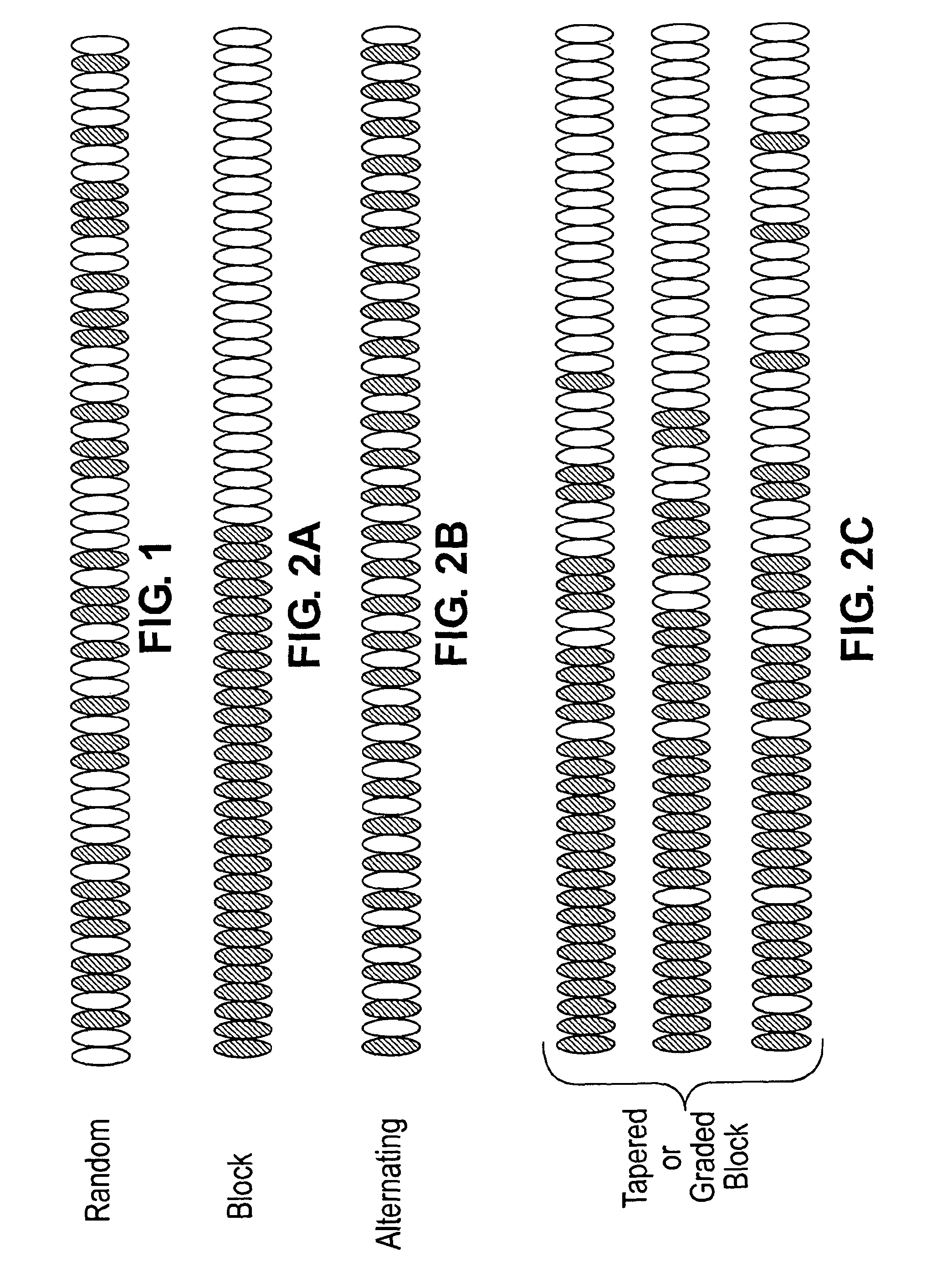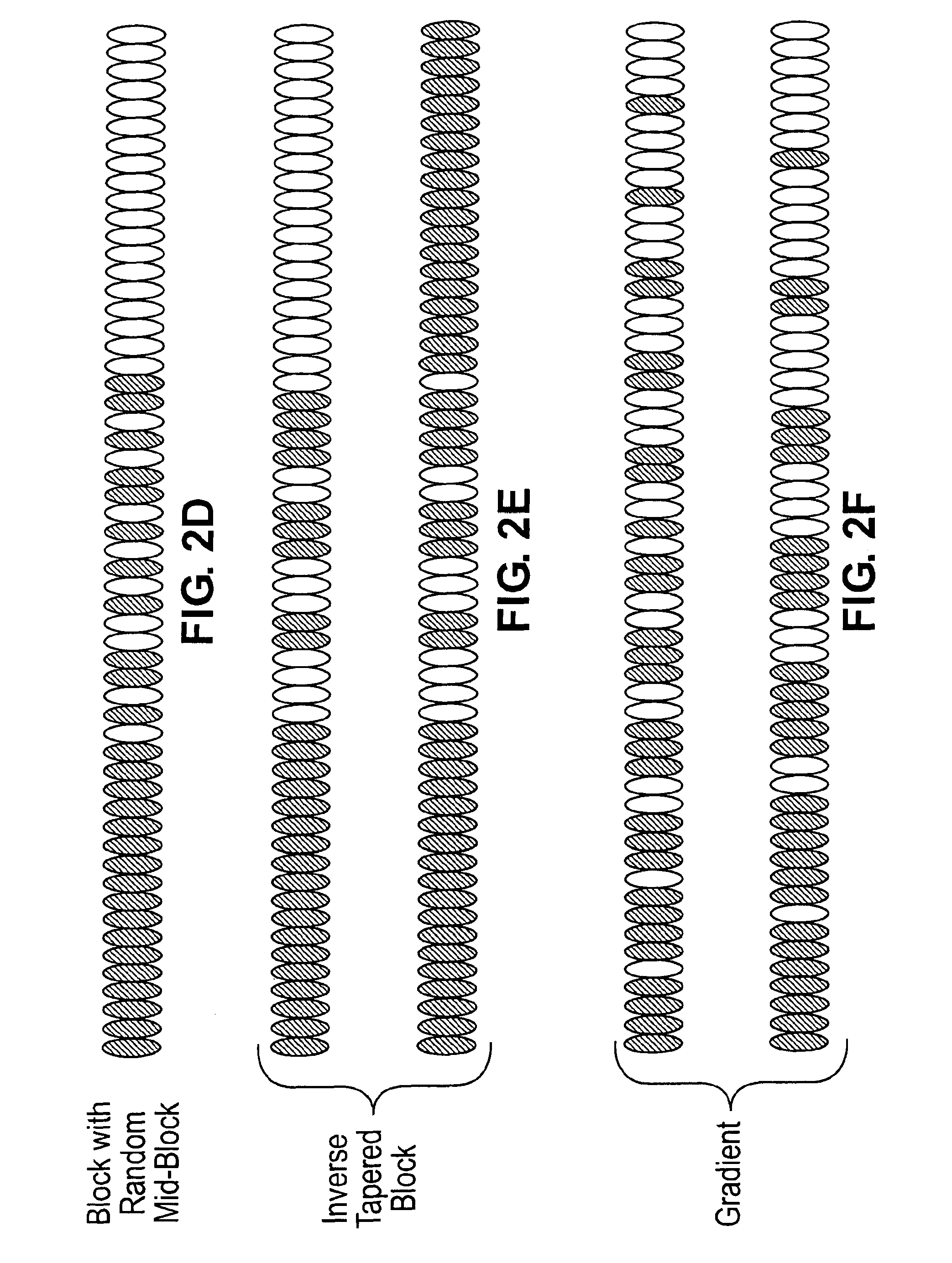Method of forming a non-random copolymer
- Summary
- Abstract
- Description
- Claims
- Application Information
AI Technical Summary
Benefits of technology
Problems solved by technology
Method used
Image
Examples
examples
[0104]Non-random copolymers, e.g. gradient and block copolymers, are formed according to the instant invention. In addition, a series of comparative random copolymers are also formed but do not represent this invention. Each of the non-random and comparative random copolymers are then evaluated to determine Glass Transition Temperature (Tg), Number Average Molecular Weight (Mn), and Polydispersity index (PDI).
Formation of Non-random Copolymers:
[0105]Four non-random copolymers (Non-Random Copolymers 1-4) are formed according to the present invention. After formation, each of the Non-Random Copolymers 1-4 is evaluated to determine Glass Transition Temperature (Tg), Number Average Molecular Weight (Mn), and Polydispersity index (PDI), using DSC with a heating ramp rate of 10° C. / min according to ASTM E1356 as described above, and gel permeation chromatography.
[0106]Formation of Non-random Copolymer 1:
[0107]Non-Random Copolymer 1 is formed by adding 10 grams of monomethacryloxypropyl te...
PUM
| Property | Measurement | Unit |
|---|---|---|
| Temperature | aaaaa | aaaaa |
| Temperature | aaaaa | aaaaa |
| Percent by mass | aaaaa | aaaaa |
Abstract
Description
Claims
Application Information
 Login to View More
Login to View More - R&D
- Intellectual Property
- Life Sciences
- Materials
- Tech Scout
- Unparalleled Data Quality
- Higher Quality Content
- 60% Fewer Hallucinations
Browse by: Latest US Patents, China's latest patents, Technical Efficacy Thesaurus, Application Domain, Technology Topic, Popular Technical Reports.
© 2025 PatSnap. All rights reserved.Legal|Privacy policy|Modern Slavery Act Transparency Statement|Sitemap|About US| Contact US: help@patsnap.com



